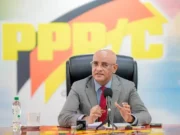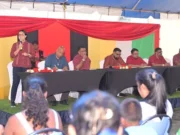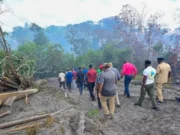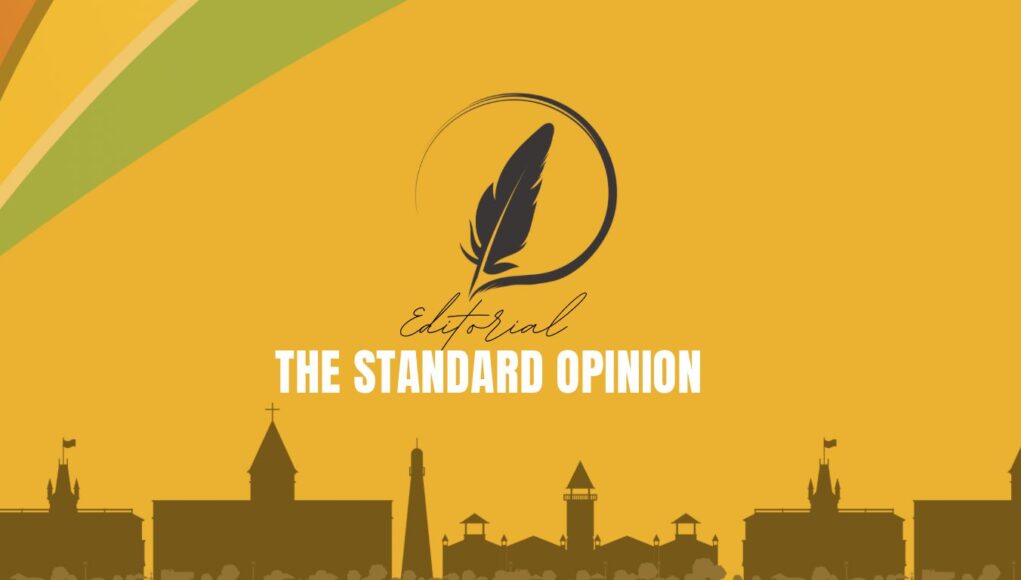When it comes to Guyanese, some things are undeniable—we love our cricket, our Pepperpot, and Dave Martins. But perhaps, above all, our hospitableness stands out as our most defining trait. Granted, we may have differing opinions about politics, or who has the best black pudding or whether Charmaine Blackman could do justice to Nina Simone’s “Don’t Let Me Be Misunderstood,” but the bottom line is, we are as welcoming as a pot of braff on a Sunday. Seriously, ask anyone who has visited these shores and they’ll tell you that our people are the most welcoming and generous you’ll ever find.
But something interesting happened last week in Region Two that caught a few off-guard.
When the news of the country’s proclaimed “richest man”, Azruddin Mohammed, was initially denied entry to a community, he —like so many others —came to the realisation that there are conditions and exceptions to which even those born of Guyanese blood can venture. We also saw the relevance of a statement that is hardly expressed but is ever appropriate in our analysis of all things: “Optics mean everything”.
Bethany is an Amerindian village nestled within the serene landscape of the Supenaam River. As with many such Indigenous communities, the rules governing entry and access are different. In fact, one cannot simply “pop up” in Bethany—or any other Amerindian village for that matter—without due consideration for the established guidelines for visitation. We will delve into that later.
But as usual, social media went into a frenzy with many gathering their pitchforks and demanding that heads roll, lambasting the government and suggesting that there was a deliberate attempt to deny the businessman entry. “Political vindictiveness”, was the term used by a person who champions Guyanese rights but lives 3,000 miles away from our shores. But was there political vindictiveness at play in thwarting the businessman’s entry? Many people seem to think so.
There is no doubt that Mr. Mohammed has garnered much attention for his philanthropic work and the seemingly down-to-earth way he interacts with those he helps. “The Prince”, as he has come to be known in some quarters, is seen as a viable heart-of-gold candidate at this year’s General and Regional Elections. Though he has not definitively stated his intention to run for office, there are a few who have professed that when the time comes – if it comes – they will offer their support. With at least one known media entity that is openly batting for the government and persons closely associated with the regime flaying Mr. Mohammed at every chance they get, optics, again, mean everything.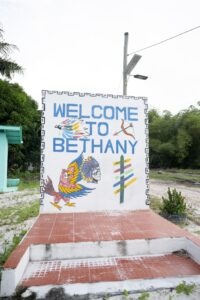
Whether Mr Mohammed likes it or not, a vast majority of our citizens – regardless of whether they love or hate him – see him as a political rival to the governing People’s Progressive Party/Civic (PPP/C). Or perhaps, he has fallen victim to the method of classification that has become somewhat customary in our culture of adversarial politics, that is, if not with, then must be against. Quite presumptuous to the uninitiated, but very possible to those here in Guyana. But more on this later as we head into the election heat.
Let’s deal with the substantive matter for now. Does one need permission to enter an Amerindian community? The answer can be found in the Amerindian Act of 2006.
Section 5 states that a person, other than one specifically listed under Section 8, must apply to the Village Council for permission to enter. Failure to do so is a punishable offence, subject to fines ranging from $5,000 to $10,000. Specifically listed under Section 8, is a person who enters village lands to conduct official business for the Government or who is acting under the authority of any written law or is otherwise lawfully authorized. But what qualifies as “official business”?
Section 8 (2) lists these as inspection, maintenance and repair of airstrips, schools, health centres and other public buildings operated by the State.
So, just to summarize, if you intend to visit an Amerindian community, you must first seek permission, unless you work with the government and your visit is to inspect or repair infrastructure manned by the State.
Now, Mr. Mohammed, via a post on his official Facebook page, admitted to some degree that he did not seek permission to enter the village. The post said, inter alia, “While he (Mr. Mohammed) respects the village’s rules, he pointed out that despite having visited many communities across this beautiful land, this was the first time he had ever been asked to seek prior permission.”
It continued: “He (Mr. Mohammed) expressed his belief that Guyana is a free country and no one should ever be denied entry into a community, especially for humanitarian purposes.”
In the end, he was granted entry, perhaps at the council’s discretion.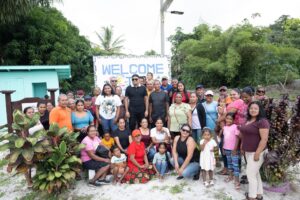
But again, optics mean everything. The people rejoiced when they caught a glimpse of the man who had finally gained access to the community. Once inside, he made promises to those in need, including the decision to construct two washrooms for a bedridden pensioner and an amputee.
Meanwhile, the Toshao, Ms. Sonia Latchman, who appeared to have followed the law, was put on blast. Her photo was plastered on the same overseas-based Guyanese social media activist’s platform and the calls began to mount for her removal. The Amerindian Affairs Minister, Pauline Sukhai was also called upon to have the Toshao sacked.
But, the Amerindian Affairs Minister cannot arbitrarily dismiss a Toshao. There is a process that must be followed and the act provides guidance.
According to Section 27 (1), a Village General Meeting (VGM) may petition the Minister to investigate the grounds that a Toshao or a Councillor has failed to carry out his (in this case, her) duties or has contravened any provision of the Act; (2) the minister shall investigate if at least 51 per cent of the VGM voted in favour of the petition; and (3), the Minister may (still) investigate if fewer than fifty-one per cent of the VGM voted in favour of the petition or if a separate petition is presented to the Minister.
But while that section says the Minister shall investigate, Section 28 (1), (2) and (3) mandate that she appoints a committee of three persons to investigate, with The National Toshaos Council (NTC) and the Regional Democratic Council (RDC) each nominating a member to that body. Only after the committee is appointed can the minister “suspend” a Toshao named in the petition.
Section 28 (4) says that the committee shall give the Toshao a “reasonable opportunity” to answer any allegations made against him (in this case, her) in the petition; (5) the committee shall make a report to the Minister within 21 days of being appointed; and the Minister shall take this report into account in making his (in this case, her) decision.
Section 28 (6) prescribes that within one month of receiving the report, the Minister shall send it to the VGM with a notice stating: (a) whether the Toshao is removed or in the case of a Toshao who was suspended, whether that person is reinstated; and (b) the reasons for the Minister’s decision.
The entire process can take, at minimum, two months.
But yes, the Minister can remove a Toshao only after those criteria have been met. Will action be initiated against the Toshao Latchman? Highly unlikely and we’ve already established that she acted within her legal scope to allegedly deny entry on the grounds that the businessman, by his admission, did not initially seek or attain permission. But anyone could have ascertained the village leader’s adherence to the rule of law and Mr Mohammed’s error by simply perusing the act.
Interestingly, even some politicians were advocating for Toshao Latchman’s removal. Why wasn’t she given the benefit of the doubt? Why were her actions labelled as “political vindictiveness”? Again, Optics mean everything! If you visited her Facebook page before she locked her profile, you, like many others, probably saw the post below too: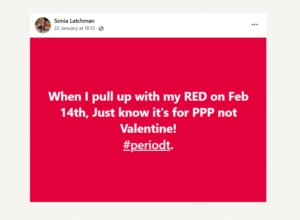
But that’s not all…Three days after Team Mohammed’s visit, the government arrived in Bethany carrying water tanks for the community in anticipation of a well to be dug next month. During that visit, the Toshao was quoted by the Department of Public Information (DPI) as saying that the community has benefitted from various initiatives implemented by the government over the years that have improved residents’ livelihoods”.
She also announced that development will accelerate in 2025, with $57.5 million in grants allocated to Bethany through the Ministry of Amerindian Affairs. She reported that Bethany has received more than $94 million in grants for developmental projects over the past four years.
Of the close to 170 Amerindian villages in the country, is it by mere coincidence that the government happened to show up at the same community that was visited by a man some see as a viable political candidate three days earlier?
Could it be that the administration sees Mr. Mohammed as a viable contender that it warranted its immediate intervention? Also, ask yourself if the public would have given the benefit of the doubt to the Toshao had she not made that post professing her allegiance to the governing party, though she followed the law.

